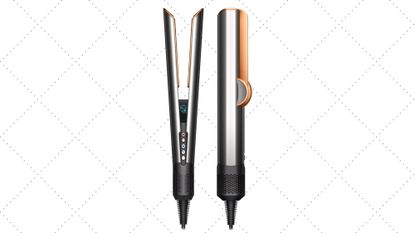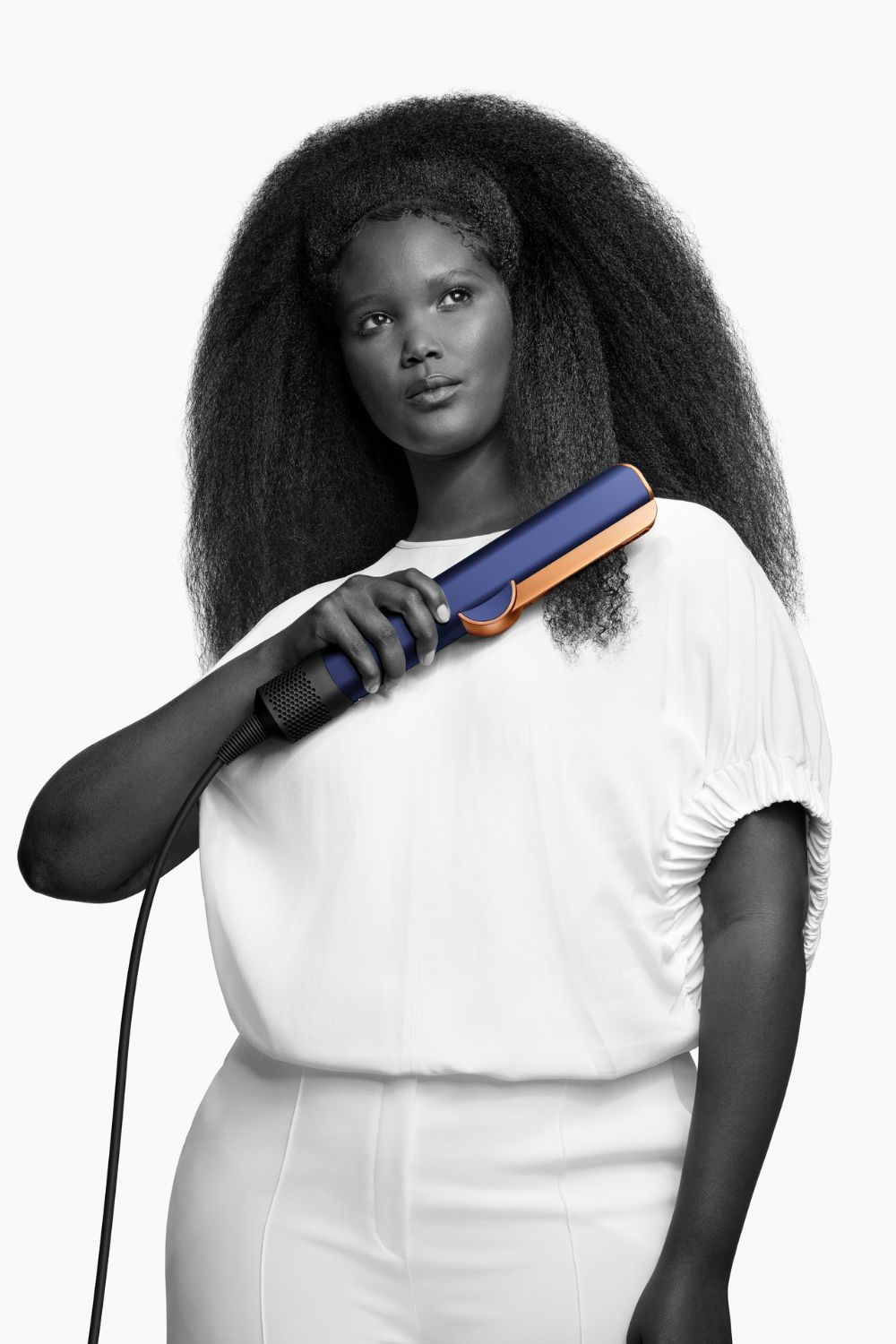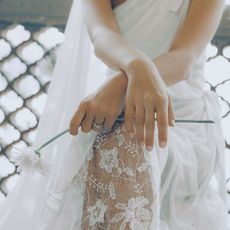Dyson is releasing a wet-to-dry hair straightener—here's what we know so far
It's not yet available in the UK, but it's coming


When Dyson launches a new hair tool, you can expect pandemonium. The first tool Dyson released, the Supersonic hairdryer, is now a mainstay in salons across the world. Its low-heat but powerful nature helps to optimise shine and minimise hair damage. The Airwrap (which, by the way, has a few alternatives, but we can't say they truly compare) changed the blowdry game for good, with people being able to achieve a bouncy blowdry at home with ease for the first time ever. Then came the Corrale—a cordless hair straightener, which was Dyson's first ever hair tool that didn't focus on air flow.
But now, Dyson is back in the air flow game—the Airstrait is here. A wet-to-dry styler that straightens hair from wet, the Airstrait promises no heat damage and claims to be able to work on all hair types. And while the Airstrait launches in the US, Canada and Mexico today, we here in the UK need to wait a little while longer before it hits the shelves (although Dyson has assured us it's coming). So, while we patiently wait for confirmation of a UK launch date, here's what we know so far about the Dyson Airstrait (including how it differs from the ghd Duet Style).
What is the Dyson Airstrait?

In short, the Dyson Airstrait is a wet-to-dry hair straightener suitable for all hair types. Stylers of this type have, historically (ghd Duet Style excluded—but more on that later), caused immense heat damage, but the Dyson Airstrait promises no heat damage when used in the wet-to-dry mode. In fact, Dyson claims it maintains "the strength and healthy look and feel of [your] hair".
With two arms, you clamp the hair at the root and glide it down through the lengths, while a precisely angled, high-pressure blade of air styles and straightens—whatever the hair type.
Does the Dyson Airstrait use heat?
Yes, the Dyson Airstrait uses heat—but not a lot. As with all of the Dyson hair tools, the Airstrait uses intelligent heat controls. In fact, it uses very high-tech sensors to monitor the temperature of the air flow 30 times every second. When the straightener is in 'wet' mode, you can choose between a 80°C, 110°C or 140°C temperature. In 'dry' mode, choose between 120°C, 140°C or a top-up 'boost' option.
On top of this, there are also two speed modes: low flow and high flow. There is also a 'cold shot' to help set the style and boost shine.
Does the Dyson Airstrait dry roots?

Another mode on the Dyson Airstrait is the 'root dry' mode. One of the fundamental flaws in stylers of this type is that they prove tricky when it comes to root drying. However, the Airstrait is fully equipped with a unique mode that makes drying the hair right at the root a whole bunch easier.
Can you use the Dyson Airstrait on dry hair?
Yes, you can! As previously mentioned, there is a 'dry' mode on the Airstrait which increases the heat of airflow to straighten dry hair. It is worth noting here that the 'no heat damage' claim is exempt when the Airstrait is used in 'dry' mode—with hotter temperatures, you can't guarantee no damage, so we'd recommend using a heat protection treatment as normal.
When is the Dyson Airstrait launching in the UK?
Right now, Dyson isn't prepared to give us an exact date. However, something tells us we won't have to wait too long until we Brits can purchase the Airstrait.
What is the difference between the Dyson Airstrait and the ghd Duet Style?
We know what you're thinking, how does this differ from the ghd Duet Style? Well, for starters, the Airstraight doesn't use hot plates at all—it relies entirely on its high-tech air flow. When in its 'shine shot' mode (the equivalent of the Airstrait's 'dry' mode), the Duet Style's hot plates heat up to 185°C, acting as a normal ghd hair straightener. The Airstrait's air flow blades reach up to 140°C.
On paper, the biggest difference between the two is that the ghd Duet Style relies on heated plates to achieve a straight, high-shine look, while the Dyson Airstrait leans on its high-tech airflow technology to create a powerful 'blade' of air.
The differences in practise? We'll get back to you as soon as we can...

Shannon Lawlor is the Acting Senior Beauty Editor at Marie Claire. With over eight years of experience working for some of the beauty industry’s most esteemed titles, including Who What Wear, Glamour UK, Stylist, Refinery29 and Fabulous, Shannon’s aim is to make the conversation around beauty as open, relatable and honest as possible. As a self-confessed lazy girl, Shannon has a particular love for fool-proof make-up products and skincare tips that save on both time and energy.
-
 I'm getting married next year—here's 23 wedding nail designs I'm considering as a bride
I'm getting married next year—here's 23 wedding nail designs I'm considering as a brideI take my wedding manicure inspiration *very* seriously
By Shannon Lawlor
-
 I suffer from unbearable period pains - but I've finally found a product that alleviates them
I suffer from unbearable period pains - but I've finally found a product that alleviates themYes, it is completely medicine free.
By Sofia Piza
-
 A world-renowned make-up artist just told me *this* trend will be everywhere this summer
A world-renowned make-up artist just told me *this* trend will be everywhere this summerPeter Philips, the Creative and Image Director for Dior Makeup, just shared his secrets
By Grace Lindsay


